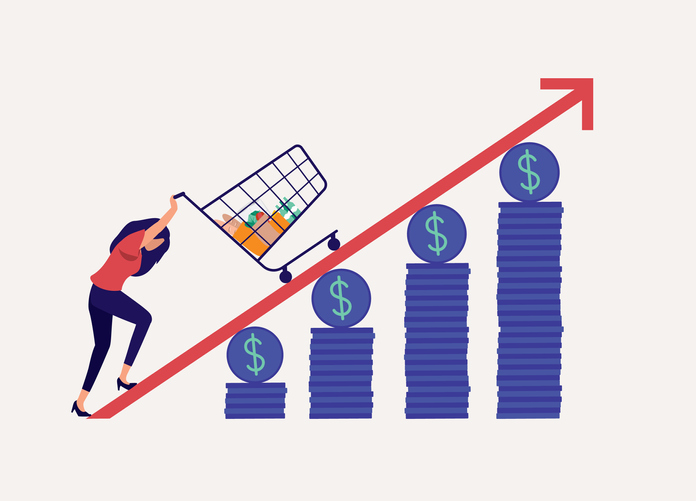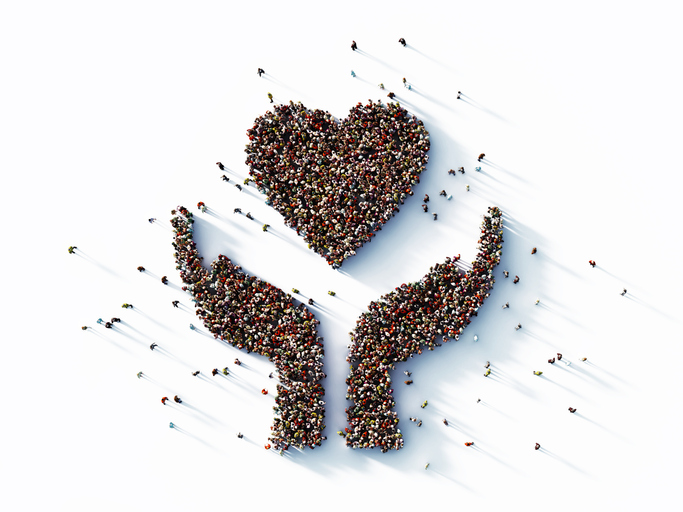The practices of kindness and generosity are at the core of the world’s religious faiths. They’re also key to personal wellbeing, according to modern research findings. Learn how paying it forward with kindness and generosity can benefit the people around you while boosting your happiness and your mental and physical health.
What does it mean to pay it forward?
Paying it forward is an old idea with a growing modern following. It acknowledges that the love and support you receive in your life—from parents, friends, teachers, mentors, and others—can’t usually be repaid, but it can be passed along to others. When you pay it forward, instead of returning a favor or kindness, you do something generous for someone else. Paying it forward is the art of keeping generosity flowing. It honors the help you’ve received in life and the people who’ve helped you, not by recognizing or thanking them directly (though you can certainly do that), but by passing that help and kindness on in an ever-widening circle.
The magic of paying it forward and of practicing kindness and generosity is that it can be contagious. Your smile can lead someone else to smile at others, brightening their days. Your kindness in offering a hand to someone in need can prompt them to help someone else. The more you pay it forward and practice kindness and generosity, the greater your positive influence on the world.
The beauty of generous acts is that the more selfless they are and the more kindness you share, the more you stand to benefit—in greater happiness, stronger social connections, and improved mental and physical health.
How Kindness and Generosity Can Improve Your Wellbeing
Research into the effects of kindness and generosity on the giver has revealed a wealth of positive benefits. The greatest benefits come to those who perform acts of kindness and generosity in person rather than at a distance (by donating money to charity, for example), and who expect nothing in return. In a paradox, being kind for kindness’s sake, with no selfish motive, appears to be key to gaining the greatest personal benefit.
Benefits of acting and speaking with kindness and generosity include the following:
- “Feel-good” chain effect—The effect your kindness has on others and the gratification of knowing that a kind word or an act of generosity can lift another’s spirits can be beneficial in itself. Often, the emotional lift provided by your kindness inspires the other person to extend a similar kindness to someone else. That can be as simple as a contagious smile or a chain reaction of generous acts.
- A boost to your happiness—Performing and receiving acts of kindness activates the same area of the brain that responds positively to good food and even addictive drugs. The warm glow you feel from being nice and having someone be nice to you is an actual physiological effect. Reflecting on past acts of kindness can trigger a similar mood-lifting response. Studies have also shown that spending money on others has a greater positive effect on the happiness of the giver than spending money on oneself.
- Improved mental health—Practicing kindness and generosity has protective psychological effects that go beyond temporary boosts in happiness. People feel better about themselves when they are kind and generous, which helps to counter negative self-talk and lift self-confidence. Other benefits include higher levels of life and job satisfaction and reductions in stress and symptoms of depression.
- Physical health benefits—The regular practice of kindness and generosity through actions such as volunteering has also been found to have some surprising physical health benefits. These include reductions in chronic pain, migraines, and inflammation; lower blood pressure; better sleep; and improvements in heart health and immune response.
- Social benefits—Being kind and generous improves relationships, strengthens feelings of belonging and community, and encourages other people to trust and respect you. Stronger social connections, in turn, have a powerful positive effect on physical and mental health.
Ways to Show Kindness and Practice Generosity
Look for opportunities in your daily life and your encounters with others—family, friends, coworkers, or strangers—to perform small and large acts of kindness. You might try these ideas:
- Share a smile.
- Offer compliments and praise.
- Call someone to find out how they are.
- Listen with your full attention.
- Lift the spirits of someone who is feeling down.
- Teach someone a skill you’ve mastered.
- Be a mentor.
- Volunteer in a way that helps people in need.
- Participate in a clean-up day at a local park.
- Donate blood.
- Accept and be grateful for another’s generous act toward you and find ways to pay it forward.
Use your creativity to find new ways to be kind and generous. Apply your understanding of the people you know to offer kindness and caring attention in meaningful ways.
Workplace Options helps employees balance their work, family, and personal needs to become healthier, happier, and more productive, both personally and professionally. The company’s world-class employee support, effectiveness, and wellbeing services provide information, resources, referrals, and consultation on a variety of issues ranging from dependent care and stress management to clinical services and wellness programs. To learn more visit www.workplaceoptions.com.
Disclaimer: This document is intended for general information only. It does not provide the reader with specific direction, advice, or recommendations. You may wish to contact an appropriate professional for questions concerning your particular situation.



































